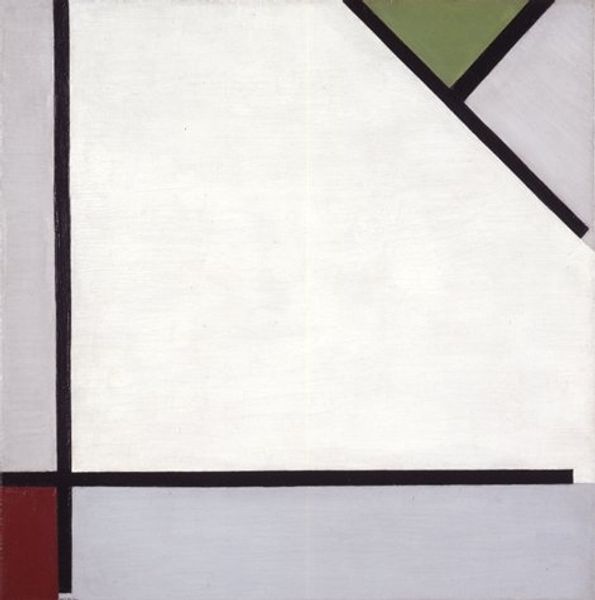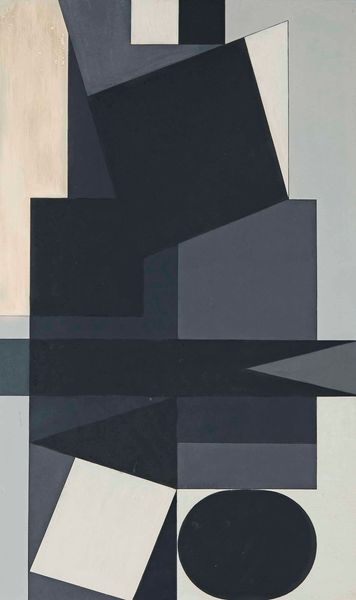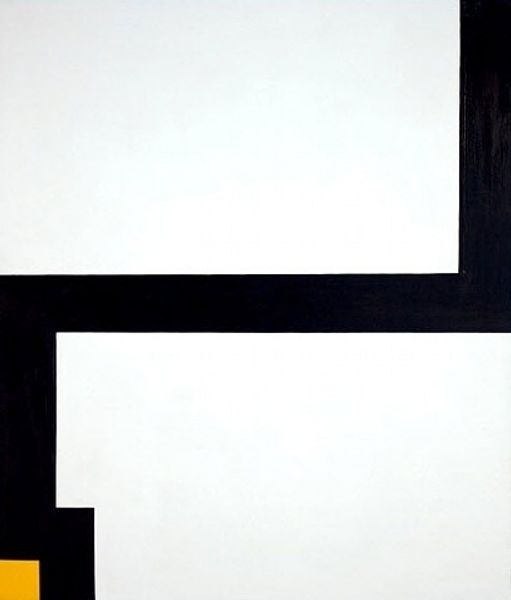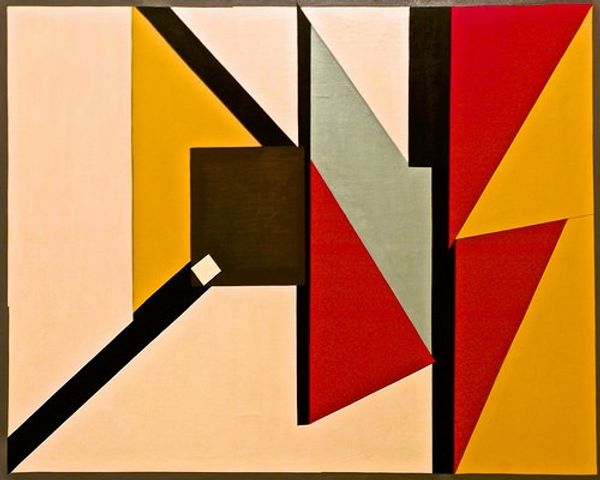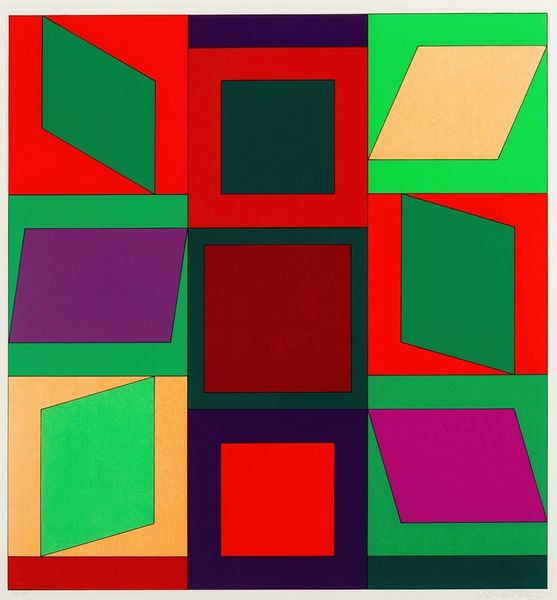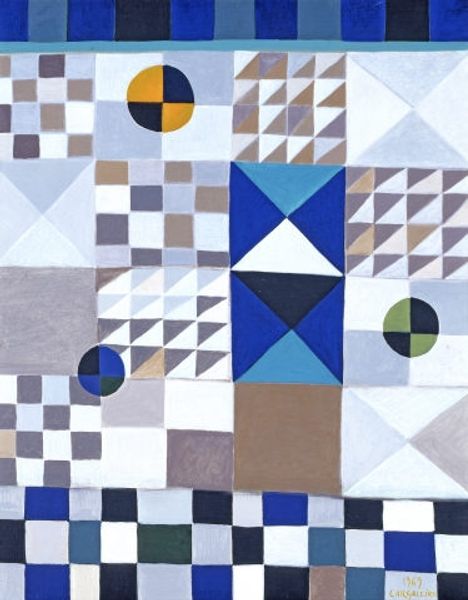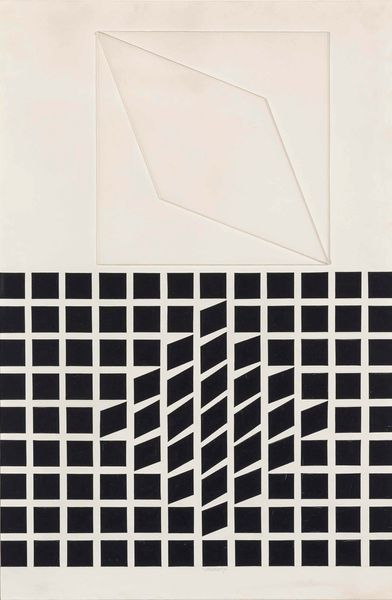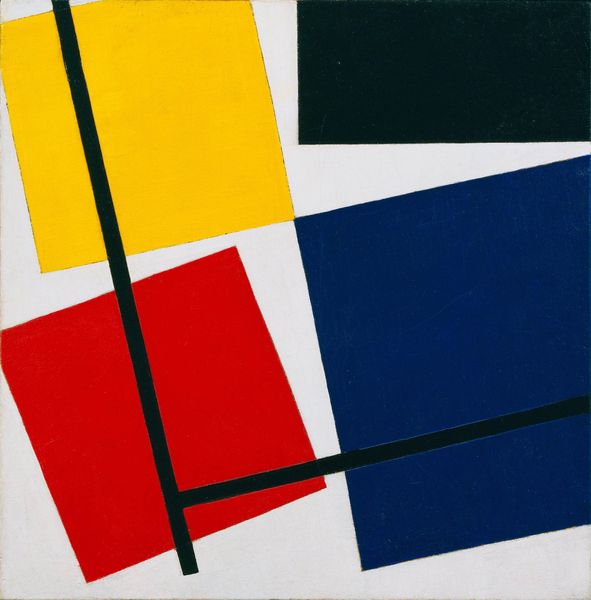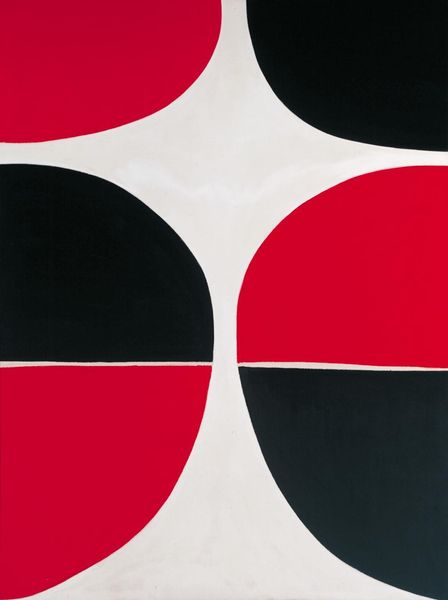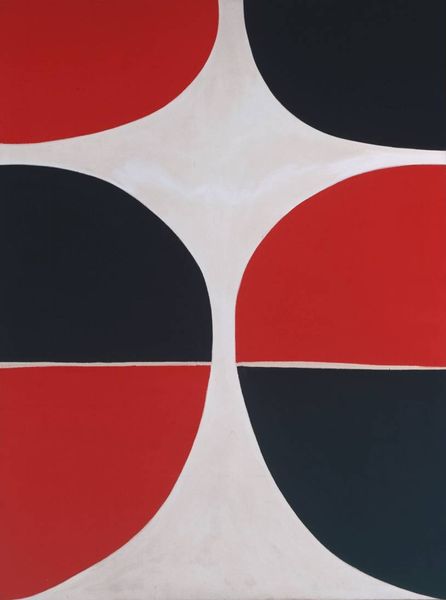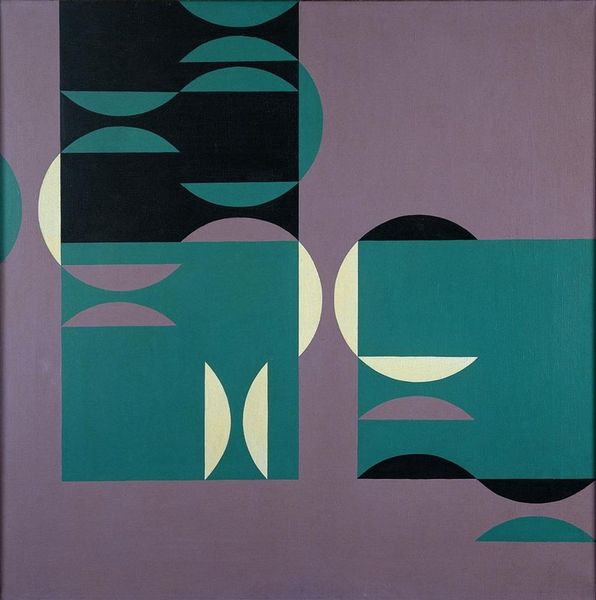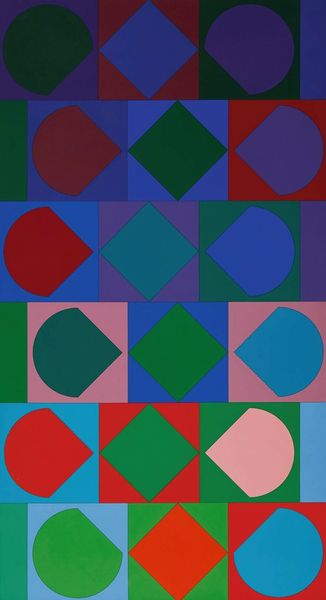
Copyright: Victor Vasarely,Fair Use
Curator: At first glance, “Ezinor” evokes a feeling of structured chaos. The interplay of black, white, and a deep, forest green – so precise and balanced. Editor: Precisely balanced, perhaps, in the artist's mind. This intriguing work before us comes from Victor Vasarely in 1949. He would go on to champion Op Art, or optical art. Here he presents what one might call non-objective abstraction using hard-edge painting. Acrylic, I understand, although it has a muted surface...it seems to pull me in, while resisting clear readings. It's making my head spin. Curator: The "spin" you describe aligns with Op Art. It’s the effect Vasarely strives to create. Consider the geometry at play – squares, triangles, arcs seemingly folding into and out of each other, evoking depth and movement on a flat plane. This carefully calibrated tension can activate a viewer’s perception. Editor: Indeed. The contrast seems integral to the overall emotional and visual effect, black opposing white opposing dark green, creating strong shapes. Note, the shapes on the upper left and right, for instance, almost reference a deconstructed checkerboard, which lends a sensation of logical pattern disrupting itself further below. I see chess! A struggle! Do you suppose those sharp triangles are visual daggers? Curator: Fascinating interpretation! Symbols are inherent in such precise choices, the triangle carrying ideas about direction or instability, perhaps. And that deep green...it anchors, offering respite from the starker contrast, hinting perhaps at growth and renewal. This interaction echoes life's push and pull – structure meeting improvisation. But this piece existed amid postwar uncertainty and perhaps reflects a world grappling for solid form even as the ground shifted beneath their feet. Editor: Very eloquently put. The idea that art can reveal psychological undercurrents that affect large populations resonates. It brings up archetypes of order disrupted… which in turn creates more interesting possibilities than pure mathematical ideals would alone! The potential hidden within “Ezinor” continues, after all, to engage and question how we construct our perceived reality. Curator: Ultimately, Vasarely achieves something extraordinary: visual music on a silent canvas, urging us to engage more critically not just with the work, but with the very nature of seeing.
Comments
No comments
Be the first to comment and join the conversation on the ultimate creative platform.
